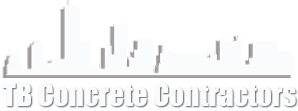Concrete is often portrayed and thought to have a dull, plain grey appearance, that is why it may not be strange for people to think so. But in truth, concrete is actually more flexible in terms of its design and appearance. Decorative concrete is also often called textured or imprinted concrete, this is mostly because stamping concrete allows it to imitate other natural stones. These include the textures and appearances of slate and flagstone, tile, brick, and even wood, which is great for beautifying your property or patio.
These stamped concretes are highly versatile in terms of pattern and color choices. Although getting concrete stamped is mainly for appearance purposes, stamped concrete also retains the many benefits that concrete has, which are that it requires less maintenance, has great durability, resistance to elements, and is fairly cheap type of construction.
Design Options For Stamped Concrete
Since concrete is usually stamped for the main purpose of aesthetics, let’s talk more about it. When it comes to patterns and color options, concrete pretty much has unlimited options. You can choose and customize your decorative concrete surface depending on the style of your landscape and architecture. The patterns and colors that you choose can be made to blend with other existing stone, tile, or textured concrete elements. You can pretty much pick designs that match or contrasts the surrounding area to emphasize the design, the stage is yours.
Color Options
Although grey and other earthly tones of color are the most common color concrete uses, decorative concrete also uses other textures and colors. For instance, if you are using some brick patterns and textures, then you can also use red or russet colors. You’re free to do whatever you want with the color of concrete. If you want to, you can mix them, have them layered, or even antiqued with stains or tints. Colors can also be used within the same stamped concrete project for realistic stone coloration.
Concrete Patterns
Naturally, you are free to choose whichever pattern you want for your decorative concrete, but some of the more popular options are natural stone patterns such as slate, flagstone, and fieldstone. Aside from those popular options, other alternative choices are brick, cobblestone, and wood patterns. There is also seamless concrete providing stamped that provides texture, but without joint patterns. In addition to this, concrete with more complex shapes or work such as steps and fountains can also get stamped.
Other Project Uses
Aside from these main uses of stamped concrete, you can also start using and providing stamped concrete alongside other decorative concrete elements such as exposed aggregate or acid staining. You may also use these stamped concretes to make rooms such as kitchens, bathrooms, entryways, family rooms, or basements look similar on a mobile home makeover within the floor. Keep in mind that designs and appearances always affect the atmosphere of the place.
Stamped Decorative Concrete Cost
Naturally, stamped concrete prices may vary greatly depending on your area and the costs for materials and labor in your local market. Similarly with all service-based businesses repair, prices may also rise and change the more complex the project is. Although concrete can be quite costly, it could be a worth it investment since you would be building a surface that lasts longer and requires less maintenance and repair.
In addition, having it stamped enhances the property’s curb appeal and aesthetic value, which is great if you’re planning to sell the property at some point. If you’re considering the price of getting stamped concrete, then a basic stamped concrete should cost about $8 to $12 per square foot, while mid-range projects can be $12 to $18 per square foot, and high-end projects are $18 or more per square foot. You can contact us for more information and a quote if the project locations.
